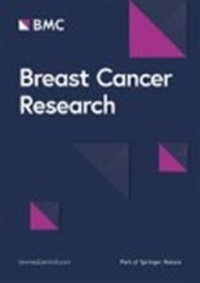抑制表皮生长因子受体(FGFR)后,FGFR1 扩增的乳腺癌细胞通过减少 p21 信号传导出现癌细胞增殖的矛盾现象
IF 5.6
1区 医学
Q1 ONCOLOGY
引用次数: 0
摘要
成纤维细胞生长因子(FGF)通过激活成纤维细胞生长因子受体(FGFR)控制各种细胞功能,包括增殖、分化、迁移和存活。ER+乳腺癌患者的FGFR扩增与预后不良有关,FGFR抑制剂目前正在进行临床试验。通过比较有无 FGFR1 扩增的 ER + 乳腺癌细胞的三维球状生长,我们的研究发现,FGF2 治疗可降低 FGFR1 扩增或过表达细胞的增殖。相反,在没有 FGFR1 扩增的细胞中处理 FGF2 会通过 MAPK 级联促进经典的 FGFR 增殖信号传导。FGF2 对 FGFR1 扩增细胞的生长抑制作用与细胞周期抑制剂 p21 的增加相一致,p21 会阻碍细胞周期中 G1 期向 S 期的转变。此外,在FGFR1扩增细胞中添加FGF2激活了JAK-STAT信号,促进了干细胞样状态。抑制p21或JAK-STAT通路以及使用泛FGFR抑制剂可逆转FGF2诱导的矛盾效应。对来自TCGA和METABRIC数据集的患者ER +乳腺肿瘤转录组的分析表明,FGF2的表达与干性特征之间存在很强的正相关性,在FGFR1高表达的肿瘤中,这种正相关性进一步增强。总之,我们的研究结果揭示了FGFR信号转导的分化,即在JAK-STAT信号转导激活和p21水平调节的驱动下,从增殖状态过渡到干性状态。FGFR扩增癌细胞中这些不同信号通路的激活以及矛盾的生长效应凸显了在癌症治疗中使用FGFR抑制剂所面临的挑战。本文章由计算机程序翻译,如有差异,请以英文原文为准。
Paradoxical cancer cell proliferation after FGFR inhibition through decreased p21 signaling in FGFR1-amplified breast cancer cells
Fibroblast growth factors (FGFs) control various cellular functions through fibroblast growth factor receptor (FGFR) activation, including proliferation, differentiation, migration, and survival. FGFR amplification in ER + breast cancer patients correlate with poor prognosis, and FGFR inhibitors are currently being tested in clinical trials. By comparing three-dimensional spheroid growth of ER + breast cancer cells with and without FGFR1 amplification, our research discovered that FGF2 treatment can paradoxically decrease proliferation in cells with FGFR1 amplification or overexpression. In contrast, FGF2 treatment in cells without FGFR1 amplification promotes classical FGFR proliferative signaling through the MAPK cascade. The growth inhibitory effect of FGF2 in FGFR1 amplified cells aligned with an increase in p21, a cell cycle inhibitor that hinders the G1 to S phase transition in the cell cycle. Additionally, FGF2 addition in FGFR1 amplified cells activated JAK-STAT signaling and promoted a stem cell-like state. FGF2-induced paradoxical effects were reversed by inhibiting p21 or the JAK-STAT pathway and with pan-FGFR inhibitors. Analysis of patient ER + breast tumor transcriptomes from the TCGA and METABRIC datasets demonstrated a strong positive association between expression of FGF2 and stemness signatures, which was further enhanced in tumors with high FGFR1 expression. Overall, our findings reveal a divergence in FGFR signaling, transitioning from a proliferative to stemness state driven by activation of JAK-STAT signaling and modulation of p21 levels. Activation of these divergent signaling pathways in FGFR amplified cancer cells and paradoxical growth effects highlight a challenge in the use of FGFR inhibitors in cancer treatment.
求助全文
通过发布文献求助,成功后即可免费获取论文全文。
去求助
来源期刊

Breast Cancer Research
医学-肿瘤学
自引率
0.00%
发文量
76
期刊介绍:
Breast Cancer Research is an international, peer-reviewed online journal, publishing original research, reviews, editorials and reports. Open access research articles of exceptional interest are published in all areas of biology and medicine relevant to breast cancer, including normal mammary gland biology, with special emphasis on the genetic, biochemical, and cellular basis of breast cancer. In addition to basic research, the journal publishes preclinical, translational and clinical studies with a biological basis, including Phase I and Phase II trials.
 求助内容:
求助内容: 应助结果提醒方式:
应助结果提醒方式:


